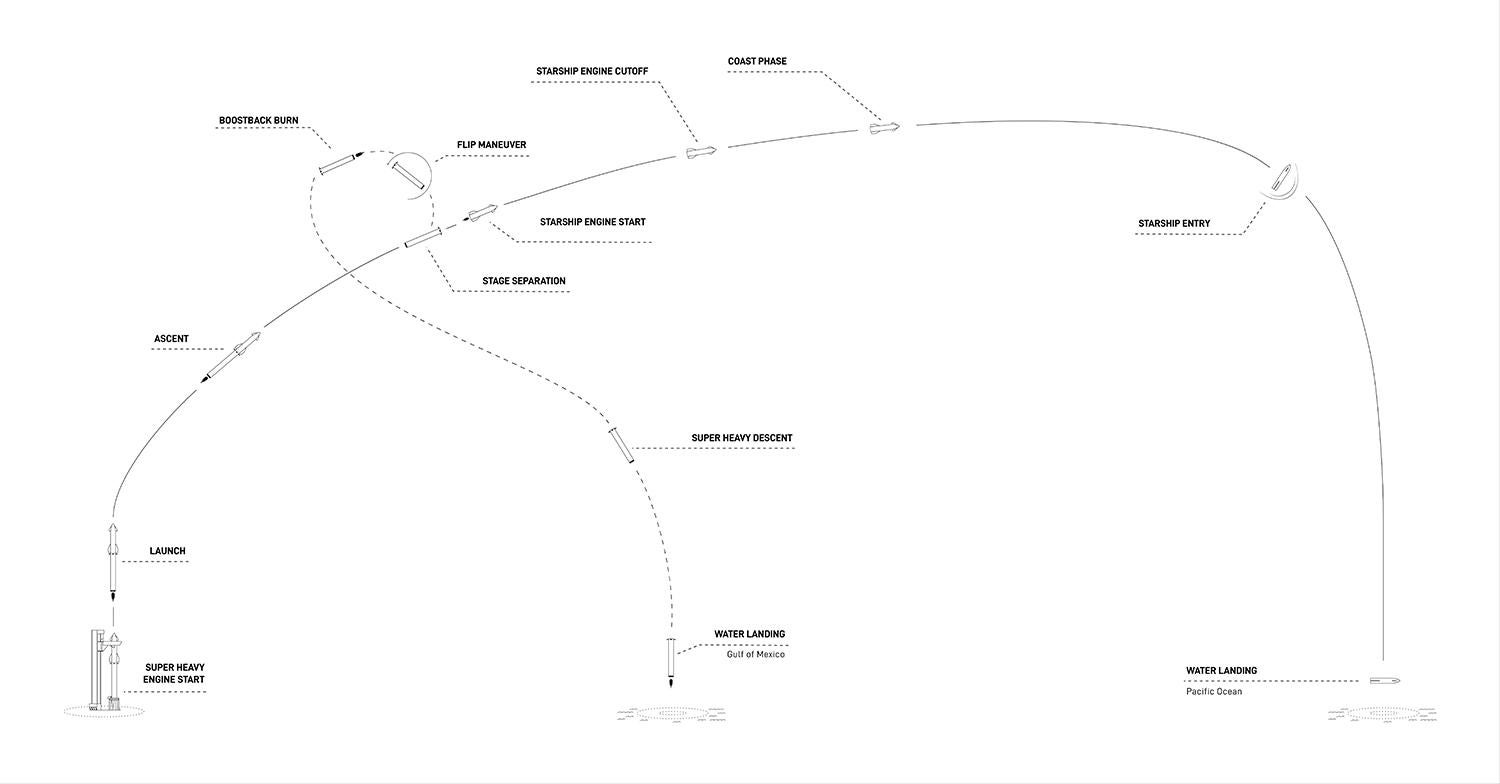The Federal Aviation Administration on Friday granted SpaceX a license that clears the California rocket maker to launch its massive methane-fueled Super Heavy/Starship rocket on its first unpiloted test flight into space early Monday.
“After an extensive license evaluation process, the FAA determined SpaceX met all safety, environmental, policy, payload, airspace integration and fiscal responsibility requirements,” the agency said. “The license is valid for five years.”
SpaceX immediately tweeted that it was “targeting Monday, April 17 for the first flight test of a fully integrated starship and super-heavy rocket from Starbase in Texas,” referring to the company’s sprawling test facility in Boca Chica on the Texas Gulf Coast.
SpaceX
The Super Heavy/Starship, collectively known simply as “Starship”, is the largest, most powerful rocket ever built, standing 394 feet tall and 29.5 feet wide.
It is capable of generating 16.7 million pounds of thrust during liftoff from its 33 SpaceX-designed Raptor engines, twice the power of NASA’s Space Launch System Moon rocket.
The super-heavy first stage alone is 23 stories tall, while the starship upper stage, designed to carry cargo, passengers or both, towers another 164 feet and is equipped with six Raptor engines.
Both stages are fully reusable, designed to fly themselves on a rocket-propelled landing at the launch site or elsewhere.
The required FAA license came after more than 500 days of painstaking analysis, environmental impact assessment, public comment and government-mandated mitigation to reduce the launch’s impact — or a catastrophic failure — on public health, property and the coastal environment around the Boca Chica launch. site
“A crash is part of our business, and it’s a pretty realistic possibility,” said an FAA official. “We often see this with first-time launches of new and somewhat unproven spacecraft at a rate of about 11%. So it wouldn’t be particularly unusual to see an accident here.
“Our job, of course, is to make sure that if an accident happens, that accident doesn’t adversely affect the public. So that’s our focus in our licensing activities.”
SpaceX
For its initial test flight, the starship will launch eastwards, propelled from the dense lower atmosphere by super heavy boosters. The FAA will help ensure air and sea lanes along the flight path are closed and reopened as soon as possible after launch.
After about two and a half minutes, the Super Heavy will pull away to make a powered landing for a splashdown in the Gulf of Mexico 20 miles off the coast of Texas, using aerodynamic “grid fins” for steering like the smaller Falcon 9’s boosters.
The superheavies will not be recovered on this flight, but the data collected will be fed into planning for the final booster landing on the same pad they launched from.
After shedding the super heavy stage, the starship will continue its ascent into space, flying over the Florida Straits at an altitude of about 150 miles, according to the FAA. It will not enter orbit. Instead, it will descend along a ballistic trajectory to re-enter the Pacific Ocean.
The starship would go down in a powerless, devastating splashdown near Hawaii. But SpaceX will likely collect valuable flight data on the ship’s ability to withstand the heat of re-entry and conduct aerodynamic maneuvers using moving stabilizer fins to test the system’s ability to control large rockets.
For operational flight, the starship will first re-enter the belly of the atmosphere using heat shield tiles to protect it from the scorching temperatures generated by atmospheric friction. Shortly before touchdown, all three engines would reignite, the ship would flip vertically and land tail first.
NASA
Both SpaceX Boca Chica and Florida’s Kennedy Space Center have built massive, 50-story-tall launch gantries designed to send starships on their way and catch returning super-heavies with two giant mechanical arms called “chopsticks.”
“This will be the first flight test of a fully integrated starship and super heavy rocket, a fully reusable transportation system designed to carry both crew and cargo into Earth orbit, help humanity return to the Moon and travel to Mars and beyond,” SpaceX said. on its web site.
“With an experiment like this, success is measured by how much we can learn, which will inform and improve the potential for future success as SpaceX rapidly develops Starships.”
Although the flight test went well, it would mark a major milestone for SpaceX — which sees Starship as key to the company’s future — and for NASA, which is paying SpaceX billions to develop a variant of Starship that could carry astronauts to the surface. of the Moon in the agency’s Artemis program.
An early test flight failure would be a clear blow to SpaceX, planned civilian flights and NASA’s Moon program. But given SpaceX’s rapid-fire launch-and-repeat flight test philosophy, a single failure can be overcome in relatively short order.
But it remains to be seen how effective the pilot program might be, or how many flights will be needed before passengers are allowed to fly.
More William Harwood



